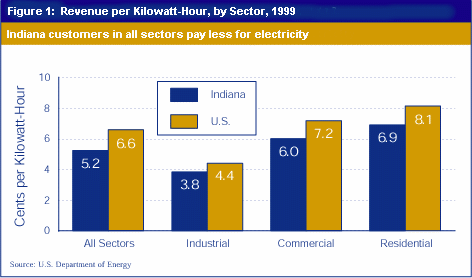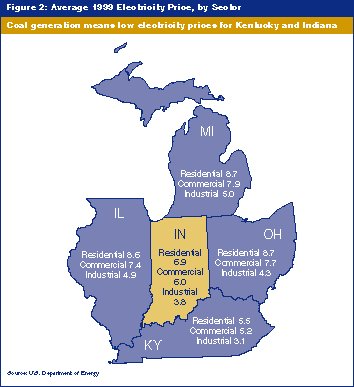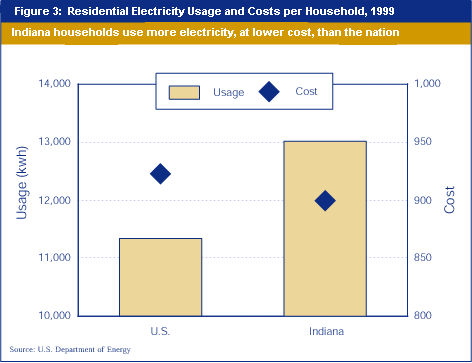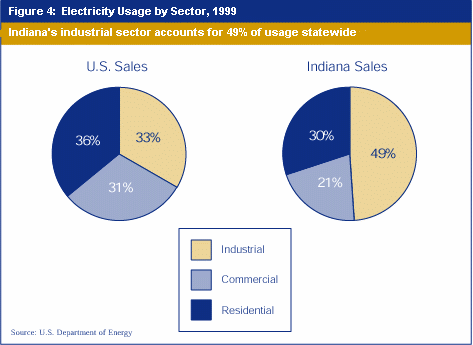Indiana's Electric Advantage
Hoosier businesses and households enjoy lower average electricity rates than do most firms and families across the nation. Comparative data from the U.S. Department of Energy indicate that in 1999, the average cost per kilowatt-hour (kwh) in Indiana was 5.2 cents, which is 21% lower than the national average of 6.6 cents (see Figure 1). Indiana ranks eighth in the nation for lowest electricity cost per kwh. The leaders in that ranking, Idaho and Washington, enjoy the benefits of hydroelectric power production.

The data indicate that each of the three sectors for which records are published enjoy the advantage of lower electricity rates. Industrial, commercial and residential users in Indiana all pay lower average amounts per kwh than their national counterparts.
Regionally, Indiana ranks second among its neighbors in electricity prices (see Figure 2). Indiana and Kentucky, the leader in the region, both have substantially lower rates because they use coal almost exclusively for the generation of electricity.

Residential electricity sales per household in Indiana averaged 13,018 kwh in 1999, which was the 20th highest usage level in the nation. Annual cost per household in Indiana was $900, which ranked 26th. At 16,790 kwh, Tennessee led the nation in usage, while South Carolina, at $1,229 per household, had the highest annual cost of electricity. Indiana is compared with the nation in Figure 3. While the Hoosier state's residents have higher usage rates, their annual bills are lower than those in the nation as a whole because of lower prices.

Electricity is important to every sector of the economy, including industry: Electricity runs the machines that enable workers to do their jobs. Wyoming had the highest usage per worker (122.8 kwh) of any state in 1999. Kentucky, West Virginia and Louisiana followed, in that order. Each of these states mines significant quantities of coal or petroleum. Indiana ranked 12th in this statistic but was still 46% above the national average because of our heavy manufacturing employment.
Overall, the industrial sector (manufacturing, mining, construction, agricultural services, fishing and forestry) accounted for 49% of electricity usage in Indiana in 1999 but only 33% nationwide (see Figure 4). Clearly, the price and availability of electricity will remain an important component of our state's economic future.

